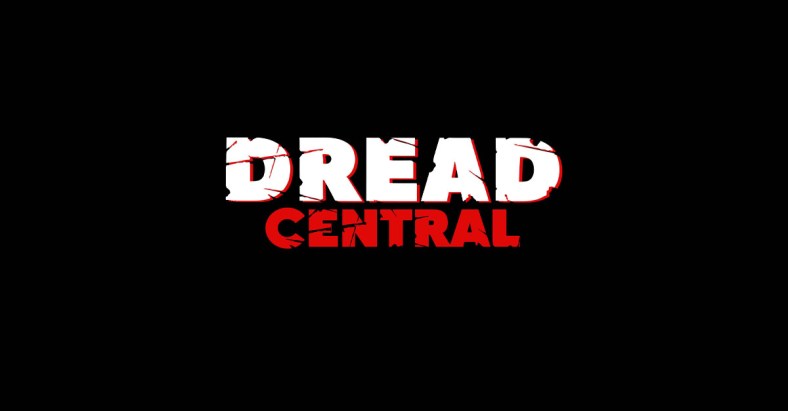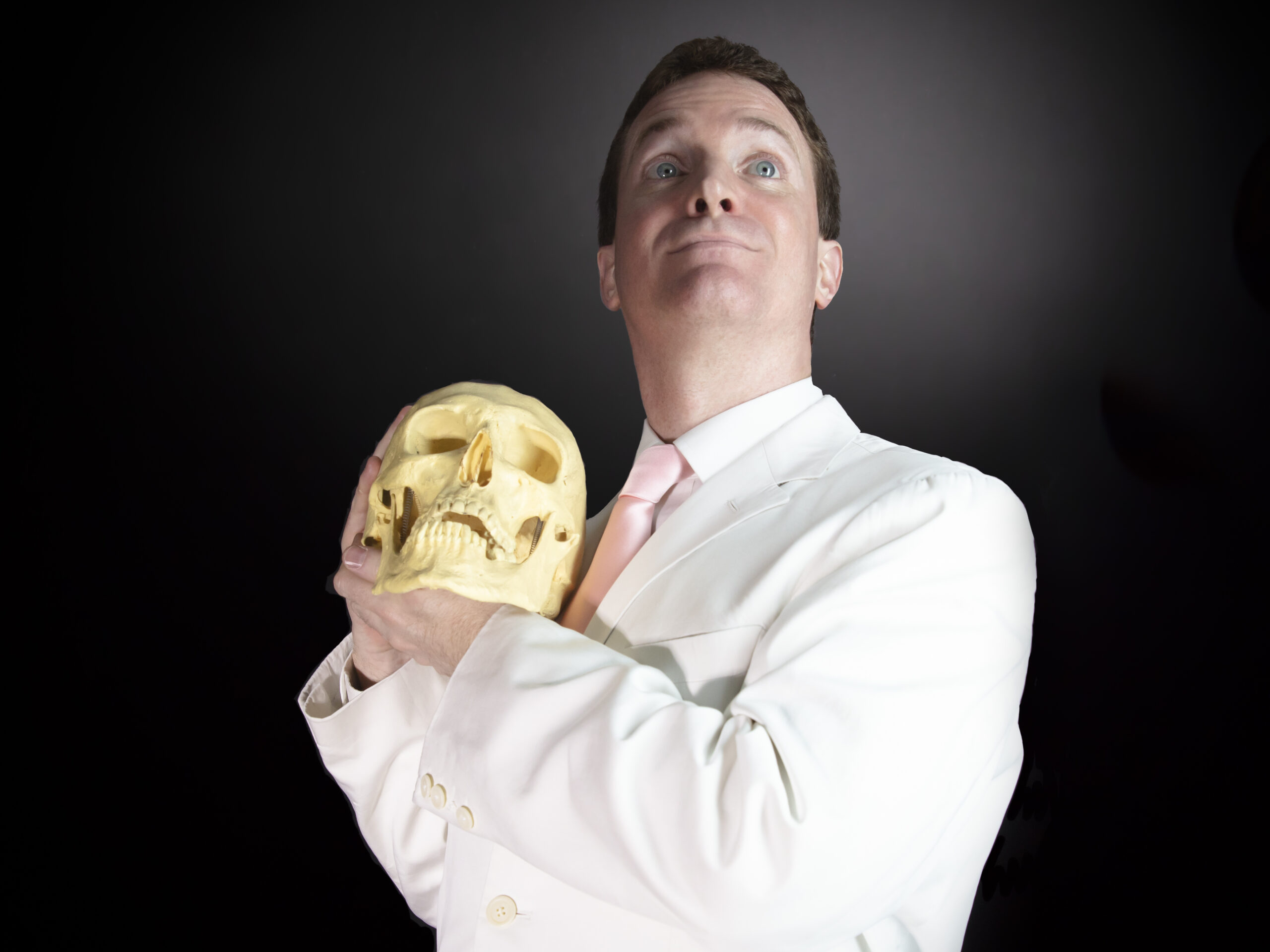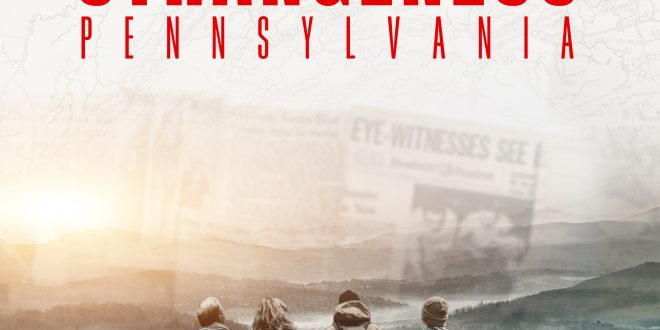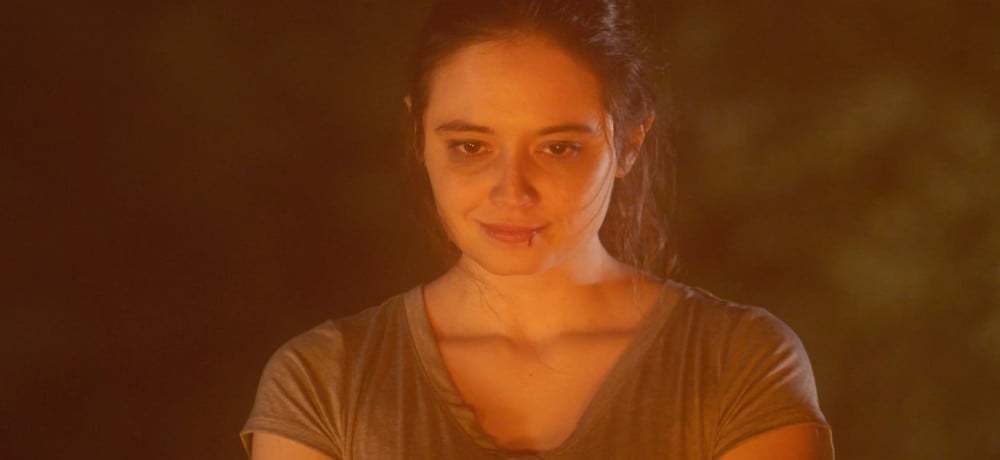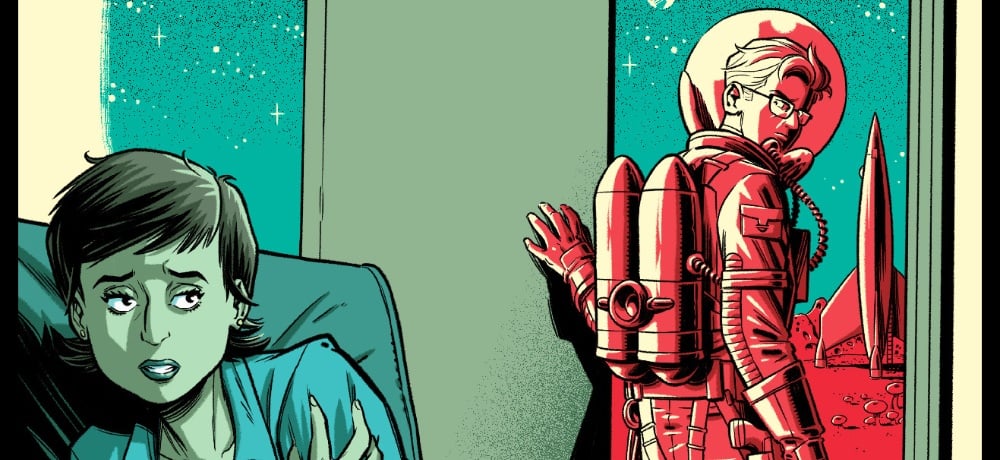‘The McPherson Tape’ was a wild history.

Horror fans know found footage films aren’t real. While fans were bewitched by the hype for The Blair Witch Project, it’s now commonly understood that found footage films are attempts to capture realism in cinema. The genre has undergone several phases, many outlined in Shudder’s recent documentary The Found Footage Phenomenon, but no era is as surreal and fascinating as the era prior to The Blair Witch Project’s release, when the genre’s tropes had yet to be codified. It is here where The McPherson Tape exists.
Sure, many of the mondo films and shock documentaries of the 70s showcased what they claimed to be real violence. Faces of Death offered audiences a chance to watch real death – with the majority of death either being staged or faked. Cannibal Holocaust infamously showcased the death of real animals on screen, with rumors circulating that the very-much-alive actors were killed on-screen. However, we now understand, despite the hype, these films are works of fiction.
In the pre-digital era, rumors spread faster than truth and uncertainty could not be quelled so easily. It is in this landscape that The McPherson Tapes convinced a certain subculture that the tape they held in their hands was not merely a low-budget horror film, but confirmation of extraterrestrial life.
Fact or Fiction?
When thinking about fiction being confused for reality, no story is more infamous than Orson Welles’s radio broadcast of The War of the World back in 1938. It is often unclear how embellished reports of mass hysteria are regarding the radio drama. But this adaptation has become a reference point for media critics when looking at the blurring between fact and fiction, at how we as people interpret media.
Directed by Dean Alioto, The McPherson Tape, also known as UFO Abduction, exists as part of a cycle of alien abduction films released during the late-80s and early-90s. While 1989’s Communion and 1993’s Fire in the Sky stand as the main films in this cycle, The McPherson Tape is distinct in that it is the only film people thought for awhile was a real found footage of an alien abduction. Communion and Fire in the Sky are both based on alleged real stories. But The McPherson Tape was always a work of fiction, confused for reality by alien enthusiasts who traded the tape without knowing the context of its creation.
The McPherson Tape was heavily inspired by these real alien stories. He cited the book Communion as a core element of inspiration. The film was made for an absurdly low-budget (the primary investor only invested $6,500). The film was filmed mostly in a single night, with the actors improvising their lines.
This is what makes The McPherson Tape so fascinating. Here, we have an almost lost film without any real hype behind it confused for something real by an audience who, as Agent Mulder claimed, wants to believe.
Part of why The McPherson Tape was confused for a real film was due to its scarcity. Only one distributor expressed interest in the film after Alioto pitched the film. In an interview with director Dean Alioto conducted by the FoundFootageCritic, Alioto explains:
“We were trying to sell UFO Abduction in 1988 or early 1989—I’m a little murky on the exact time. We did our trip to San Francisco and actually got a distributor if you can believe it. The distributor took the film and all the artwork and everything. A couple of months later before the film got released the distribution company burned to the ground. Not a joke. It literally burned to the ground. I think the owner probably set it on fire for insurance reasons.”
Among the elements lost were the main master of the film and the artwork for the film. Alioto would think the film was entirely lost until he received a phone call in 1994 confirming that screeners of the film were sent to video stores. These screeners often edited out the end credits, resulting in people thinking this was genuine found footage.
A Video Without Context
Many people might have first learned about The McPherson Tape due either to its 1998 UPN remake Alien Abduction: Incident in Lake County or the film’s streaming release on Shudder. We’ll return to the confusion the UPN remake caused in a moment. However, the original film, without a mainstream release, was a rare film that lacked a pop culture signature.
However, the edited version without end credits was distributed among UFO experts. While it’s unknown who specifically distributed the tapes, The McPherson Tape ended up causing a massive controversy in the 1993 International UFO Congress Convention, held in Las Vegas, Nevada.
What gave the tape a huge bump in legitimacy among UFOlogists was when a Lieutenant Colonel from Air Force Intelligence named Donald Ware saw the tape. Donald Ware was both an intelligence agent with decades of experience and a mainstay at UFO conventions, insisting that the world needed to prepare for alien intelligences coming to the planet. His military rank made it hard for critics to dismiss his words outright, even if, in hindsight, it’s clear his intelligence regarding genuine alien abduction footage was inaccurate.
Ware in particular was convinced that Grays had visited the planet, seeking to abduct people to create alien-human hybrids. As he stated at the International UFO Congress Convention, “I hope we allow the hybrids to inhabit this planet before it becomes too late to save it from human selfishness…Perhaps this is what is needed to bring to light a new world order that resembles heaven on earth.”
It’s perhaps this that led him to believe the aliens he saw in The McPherson Tape were real, as Alioto designed the aliens in the film after the Grays. However, as seen by behind-the-scene production stills, it’s pretty evident that none of the Grays were real aliens, but were rather his actors in fairly cheap, stiff costumes.
Denying The Evidence of Your Eyes and Ears
Alioto was entirely clueless about this controversy until the mid-90s. As Alioto again puts it in the same interview:
“I kind of forgot about it. Then five years later (1994) I got a call from some guy representing Hard Copy, Encounters, and Unsolved Mysteries. His name was Sean Morton. Has said, look, do you know anything about this found footage? It’s the first time I heard of the term ‘found footage.’ He says this footage was found and all these shows want to get the rights to it. He asked if I had anything to do with an alien video. I said yeah, yeah, I made this thing.”
What’s interesting to note about this controversy is that, clearly, despite many in the UFO researching field thought the tape was legitimate, there was enough information present to link Alioto to the tape’s existence.
Alioto went on to describe the making of the film on the television show Encounters: The Hidden Truth. During the program, they interviewed people who believed the film was real. Among them was UFO Researcher Tom Dongo. During the episode, he stated:
“When I first ran across the tape I was invited over to a friend’s house who said he had a very interesting UFO tape. . . I was stunned—shocked, by what I saw. I thought the tape might be real because it could fit in very well with so many UFO alien incidents that I know of. It fit very well in fact—almost too well. I thought no one could fake something like that.
“In the one sequence where I believe it’s Jason that’s carrying the supposedly dead alien in. I took photographs of each frame and in one frame the eye of the alien is sunken in. When I was at the International UFO Conference there was a man standing over my shoulder as I was going through these prints and he said ‘I had seen dead aliens and that’s exactly what happens.’ When they are dead their eye gets concaved like that.”
However, even after Alioto’s connection to the tape was revealed, people…still thought the tape was real. In his interview, Alioto explains:
“I went on that show and that lit a fire in the UFO community. Everyone was reaching out to me trying to get copies of UFO Abduction. The Japanese went nuts over it because of some clips of the film. I even got calls from people wanting me to stop UFO abductions from happening, preventing them—that’s a cottage industry that I missed the boat on.”
Even Dongo, who was interviewed on Encounters, ends the episode by indicating that, even with all the evidence to the contrary, he still believed the video was real. “There’s really something inside me that really is not convinced that parts of it are not real. I have a feeling still that parts of that video maybe one-hundred percent authentic.”
Encounters also interviewed Donald Ware, the retired air force intelligence agent who is partially responsible for The McPherson Tape’s level of infamy among UFO researchers. And even he, after all the evidence provided to him, still believed The McPherson Tape was authentic. During the episode, he states:
“I am not convinced the thing is a hoax because I know that our government policy is to insert disinformation into every major UFO case or release the document or possibly every home video that gets on the market. The reason is to keep the public from getting too excited about our alien visitors hence the sticker is on the back of the videos saying this is a dramatizing which allows people not to accept it if they don’t have to.”
The Remake – And More Controversy
There was enough interest in the film that Alioto accepted an offer to remake The McPherson Tape as a made-for-TV film. Alioto had access to a far larger budget for this found-footage film. UPN aired Alien Abduction: Incident in Lake County on January 20th, 1998. This film aired roughly six weeks prior to The Last Broadcast and 18 months prior to the release of The Blair Witch Project. While it was clear that Alioto was making a fictitious film, the format confused enough people into believing they were watching a real alien abduction —again.
The film came in two editions: an hour-long version and a two-hour version for international audiences, which contained interview segments, including one by Alioto himself. There, he cheekily says regarding the footage, “It’s unnerving because if it’s a hoax, I should have been the one that directed it.”
Alien Abduction: Incident in Lake County aired after a documentary called Real Vampires: Exposed! This resulted in multiple people thinking that the two programs were both works of tabloid journalism. Local papers needed to put out notices confirming that, no, the McPherson incident was an entirely fictional event and not real.
Most notably, UFO researchers, including Stanton Friedman (one of the original Roswell civilian investigators), insisted either that Alien Abduction was real or that the “documentary” was based on a real UFO tape, that tape being The McPherson Tape, which they insisted was authentic even in the late-90s.
The fact that Alien Abduction featured a credits’ roll at the end showcasing the actors didn’t really stop people from speculating. In fact, in New Zealand, the credits were cut from the broadcast, further creating an air of uncertainty regarding this film’s authenticity. Thankfully, early message boards speculating on the film could confirm the characters in the film were, indeed, played by actors.
However, it’s important to note that, much like Orson Welles’s War of the Worlds broadcast, the paranoia surrounding these films is more than a little overblown. Alioto has been candid about receiving fan mail from fans who saw the film at too young an age and admit that the film might have helped turn them into a horror enthusiast.
On Dread Central, editor-in-Chief Mary Beth McAndrews cites the remake Alien Abduction as an essential Thanksgiving film. She also articulates so very clearly the staying power of Alioto’s two works. “The found-footage format lends itself to a personal feel that makes the film feel all the more real.” This film—especially the less-polished original—eels like a total blurring of cinema and reality. It’s no wonder so many members of the audience, even when realizing the film is fiction, still want to believe.

